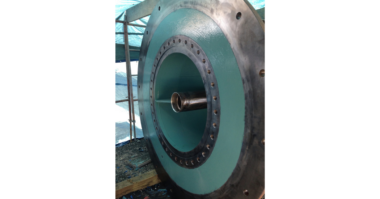Ensuring sealing reliability in pulp and paper mill pumps is crucial due to the corrosive and abrasive nature of many of the fluids being processed. Here are some SEPCO methods and best practices to enhance sealing reliability in these challenging environments:
1. Material Selection:
- Elastomers: Choose elastomers that are resistant to the chemicals commonly used in pulp and paper processes. EPDM and FKM are commonly used due to their chemical resistance.
- Face Materials: Silicon carbide is often chosen for its hardness and resistance to wear, especially when dealing with abrasive slurries.
2. Mechanical Seals:
- Dual Seals: Consider using dual mechanical seals with a barrier or buffer fluid system. This provides a backup in case the primary seal fails and can help cool and lubricate the seal faces.
- Hard Face Combinations: Using hard face combinations, like silicon carbide can offer better wear resistance against abrasive media.
3. Flush Plans:
- Implement API (American Petroleum Institute) flush plans to provide clean, cool lubrication to the seal faces, which can extend the life of the seal. Plans like API Plan 32 (external flush) or Plan 54 (pressurized external quench) can be beneficial.
4. Seal Chamber Design:
- Ensure the seal chamber is designed to facilitate proper lubrication and cooling of the seal. A tapered bore seal chamber can help in this regard.
5. Regular Maintenance and Inspection:
- Establish a routine inspection schedule to check for signs of wear or damage. Regular maintenance can help identify issues before they lead to catastrophic failures.
6. Vibration Analysis:
- Regularly monitor and analyze pump vibrations. Excessive vibration can lead to premature seal failure.
7. Training:
- Ensure that maintenance personnel are adequately trained in the installation, maintenance, and troubleshooting of seals. Proper installation is crucial for seal longevity.
8. Addressing Cavitation:
- Cavitation can damage both the pump and the seal. Ensure that the pump is operating within its recommended range to avoid cavitation.
9. Temperature Monitoring:
- Monitor the temperature near the seal area. Overheating can indicate issues like dry running, which can quickly damage the seal.
10. Inventory Management:
- Keep a stock of essential seal components for quick replacements. However, ensure that stored seals are kept in appropriate conditions to prevent them from degrading.
11. Collaboration with Suppliers:
- Work closely with your seal supplier and manufacturer. They can provide insights into the latest technologies and materials that can enhance sealing reliability.
By implementing these SEPCO best practices and continuously monitoring and maintaining the sealing systems, pulp and paper mills can significantly enhance the reliability and lifespan of their pump seals.





Comments